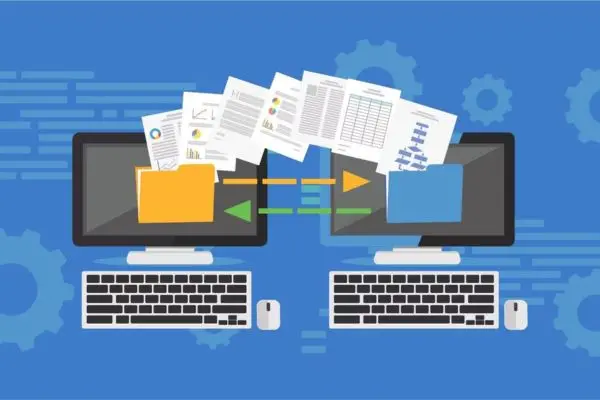Many businesses underestimate the importance of regular website maintenance, often overlooking imperative tasks that can greatly impact your online presence and customer engagement. To ensure your website runs smoothly, remains secure, and continues to attract visitors, it’s crucial for you to implement a routine maintenance schedule. In this post, we’ll explore the top 10 imperative website maintenance tasks you should perform regularly, empowering you to keep your digital storefront in optimal condition and enhance your overall business success.
Update Software Regularly For Website Maintenance

To keep your website running smoothly and securely, it is necessary to update your software regularly. Outdated software can lead to vulnerabilities that hackers can exploit, compromising your website and damaging your reputation. Ensuring that your content management system (CMS) and its associated plugins are updated will not only help maintain the functionality of your website but also enhance its overall performance.
CMS and Plugins
Clearly, your CMS is the backbone of your website, and like any other software, it requires regular updates to ensure optimal performance. Most CMS platforms, including WordPress, Joomla, and Drupal, frequently release updates that fix bugs, add new features, and patch security flaws. By routinely checking for and applying these updates, you can keep your website functional and equipped with the latest tools and features available.
Additionally, plugins extend the capabilities of your website but can also pose risks if they aren’t maintained properly. Each plugin must be compatible with your CMS and kept current to avoid conflicts that can lead to site crashes or security issues. Always ensure that your installed plugins are regularly updated to reduce the risk of vulnerabilities that could be leveraged by malicious entities.
Security Patches
You must not overlook the importance of applying security patches as they become available. These patches are usually released to address specific vulnerabilities that could pose a risk to your website. By failing to implement these updates, you might be leaving your site open to attacks that could result in data breaches or other compromises.
Any delay in applying security patches might give cybercriminals the opportunity to exploit known vulnerabilities in your systems. Regularly reviewing your website for any outstanding patches and prioritizing their application will help you maintain a strong security posture. Always monitor industry news or security bulletins related to your software, as staying informed can alert you to potential threats and vulnerabilities that you need to address promptly.
Monitor Website Uptime

One of the critical tasks you must regularly perform is monitoring your website’s uptime. Your website’s availability directly impacts your business, influencing not just user experience but also search engine rankings and conversion rates. Therefore, being proactive about uptime helps ensure that your customers can always access the information or services they need, when they need them. The longer your site is down, the greater the risk of losing potential customers and revenue.
Downtime Notifications
Monitor your website using tools that can send you automatic downtime notifications. These alerts can notify you through email or SMS if your site goes down. Prompt notification allows you to respond quickly, diagnosing the issue and attempting to resolve it before a significant number of visitors are affected. You can also set these notifications based on different thresholds, so you are aware not just of complete outages but also slower loading times that may degrade the user experience.
Performance Tracking
Uptime monitoring goes hand in hand with performance tracking. This means not only knowing if your site is online but also understanding how quickly it loads and functions across different devices and locations. Regularly tracking these performance metrics helps you spot trends, enabling you to make informed decisions about necessary optimizations and improvements. A fast, responsive site contributes significantly to customer satisfaction and retention rates, giving you an edge over competitors who may overlook these vital aspects.
The vital role of performance tracking cannot be overstated. By using website analytics tools, you can gather data on how your site is performing in real time. This can include metrics such as page loading speeds, server response times, and error rates. By analyzing this information regularly, you can identify patterns that may indicate underlying issues, allowing you to implement corrective actions before they affect your visitors. In essence, performance tracking is not just about maintaining uptime; it’s about delivering a seamless user experience that keeps your customers coming back.
Check for Broken Links

Clearly, maintaining a functional website requires regular checks for broken links. Broken links, also known as dead links, can significantly hamper user experience and hurt your website’s search engine ranking. When visitors click on a link that leads to a 404 error page, it not only frustrates them but also makes your site appear unprofessional and neglected. Additionally, search engines may penalize your website for having broken links, impacting your visibility online. To avoid these pitfalls, you should dedicate time each month to scanning your site for any broken links, both internal and external.
Internal links
Clearly, internal links are critical for guiding users through your website and helping search engines understand your site’s structure. These links typically connect one page of your site to another, enabling visitors to navigate easily and find relevant content. If you have updated or removed a page without adjusting the internal links, you might unintentionally create broken links that lead visitors astray. Regularly reviewing your internal links will help ensure a seamless user experience, which ultimately keeps visitors on your site longer and encourages them to engage with your content.
External links
Links to other websites, known as external links, can also lead to broken connections if the linked pages no longer exist or have been moved. Every time you link out to another site, you’re depending on that site to keep its content live. If an external link becomes broken, it can diminish your credibility and inform your audience that you aren’t keeping your website maintained. This is why it’s critical to review external links regularly, ensuring they direct users to valid, reputable sites.
Links to external sources not only improve your website’s credibility by associating you with reputable content, but they also enhance user experience by providing your audience with supplementary information. Nonetheless, dead external links can lead your visitors to frustration and disappointment; therefore, make it a part of your routine to check these connections. Utilizing various online tools is worthwhile as they can automate the process of detecting broken external links, helping you maintain a polished and helpful website.
Optimize Image Files

Once again, optimizing your image files is a crucial step in maintaining a fast and efficient website. Large image files can significantly slow down your site’s loading speed, which can negatively impact user experience and search engine rankings. By taking a proactive approach to image optimization, you not only enhance your site’s performance but also contribute to better engagement and lower bounce rates. Regularly reviewing your image files for optimization is an crucial task that you should incorporate into your website maintenance routine.
Compression Tools
To effectively reduce the size of your images without sacrificing quality, you can use various compression tools available online. These tools can help you streamline your images by minimizing their file size, which ultimately leads to faster loading times. Popular options include software like TinyPNG, JPEGmini, and ImageOptim. Many of these tools allow for lossless compression, which means you can achieve a significant reduction in file size while maintaining the visual integrity of your images.
By incorporating these compression tools into your workflow, you ensure that your website remains optimized for performance. Automating this process, when possible, can save you time and keep your website running smoothly. Make it a habit to compress your images before uploading them to your site, and remember to review your existing images periodically to keep everything in check.
File Format Selection
Tools for file format selection are crucial for optimizing your images effectively. Different image formats serve different purposes and can impact your website’s load times and quality. For instance, JPEG is ideal for photographs, offering a good balance between quality and file size. On the other hand, PNG is better suited for images that require transparency or have text, as it retains sharp edges at a higher resolution. Choosing the right format is vital to achieving both speed and quality on your site.
Compression and format selection go hand in hand when it comes to image optimization. When choosing file formats for your images, consider the content and purpose of each image. If you have vibrant photos, JPEG is usually the best choice for its ability to compress while maintaining acceptable quality. For images with transparency or detailed graphics, PNG should be your go-to option. Consistently reviewing and applying the appropriate formats for your images will further enhance your website’s performance, ensuring that users enjoy a speedy and visually appealing experience.
Analyze Website Analytics

Your website is an invaluable asset, and to maximize its potential, you need to regularly analyze its analytics. By delving into metrics related to your traffic, user behavior, and conversions, you can gain important insights into how visitors interact with your site. This information is critical for identifying areas of improvement and developing strategies to enhance user experience and drive business growth.
Traffic Patterns
There’s a wealth of information to uncover when you evaluate your website’s traffic patterns. Start by examining the volume of visitors you receive over time and identify trends that may correspond with marketing campaigns, product launches, or seasonal fluctuations. Look for spikes in traffic to pinpoint which content or channels drive the most engagement, and consider using this intelligence to inform your future marketing efforts.
Understanding the sources of your traffic—whether it’s organic search, social media, referrals, or direct visits—enables you to allocate resources effectively. If you find that certain sources are outperforming others, you can double down on those avenues or adjust your approach to underperforming areas. This ongoing analysis will help you stay ahead of market changes and optimize your strategy to attract more visitors.
Conversion Rates
An equally important metric to monitor is your website’s conversion rates. This figure represents the percentage of visitors who complete a desired action, such as making a purchase, signing up for a newsletter, or filling out a contact form. By analyzing your conversion rates, you can identify which pages or elements are performing well and which may need adjustments to improve user engagement and lead generation.
Plus, digging deeper into your conversion data allows you to segment your audience and tailor your messaging accordingly. For example, you might discover that different demographic groups convert better on specific landing pages. By optimizing these pages and A/B testing different elements, you can effectively boost your conversion rates and enhance your overall online performance.
Perform Regular Backups

Keep your business’s website secure by performing regular backups. A backup is imperatively a copy of your website’s files and data, which can be a lifesaver in the event of a cyberattack, server malfunction, or unexpected data loss. Regular backups ensure that you can quickly restore your site to its previous state without significant downtime or loss of crucial information.
Database Backups
Little do many business owners realize how critical it is to back up their database regularly. Your database holds all the imperative information for your website, including user accounts, transaction records, and content. If corruption or a breach occurs, having a recent backup of your database can save you from catastrophic data loss and help you maintain your business continuity.
To perform effective database backups, you should set up an automated system that takes snapshots of your database at scheduled intervals, such as daily or weekly, depending on your needs. Additionally, ensure your backups are stored securely and are easily accessible in case you need to restore them.
File System Backups
While database backups are crucial, you cannot overlook the importance of file system backups. Your website’s file system stores all the static content, including images, scripts, themes, and configuration files. If these files are corrupted, lost, or deleted, it can severely impact your website’s performance and user experience.
Backups should be stored in multiple locations to prevent loss due to hardware failure or accidental deletion. Consider using cloud storage solutions alongside local backups for extra security. With a solid file system backup strategy, you’ll ensure that all your imperative content can be restored swiftly and efficiently if anything goes awry, keeping your business running smoothly.
Fix Mobile Usability

Now, ensuring that your website is mobile-friendly is crucial in today’s digital landscape. With a significant portion of online traffic coming from mobile devices, poor mobile usability can drive potential customers away. One of the key aspects to address is responsive design, which allows your website to adapt seamlessly to different screen sizes, whether accessed on a smartphone, tablet, or desktop.
Responsive Design
If your website isn’t designed responsively, users may experience layout issues, misplaced elements, and an overall frustrating viewing experience. This not only affects user engagement but can also negatively impact your search engine rankings. You should regularly check your website’s design across various devices to ensure that all elements are displayed correctly and that users can navigate your site easily, regardless of the device they are using.
Mobile Testing
Even when your website looks great on a desktop, it is necessary to test its performance on mobile devices regularly. Mobile testing goes beyond just visual checks; it involves assessing loading speeds, ease of navigation, and accessibility of content. You should conduct thorough testing to identify any potential issues that may be affecting your users’ experience on mobile devices, while also monitoring how these elements perform over time.
Usability testing on mobile devices can provide you with valuable insights into how users interact with your site. Tools like Google’s Mobile-Friendly Test can help you identify issues regarding usability and offer recommendations for improvement. By addressing any identified issues, you will ensure that your website delivers an optimal experience for all users, thereby enhancing satisfaction, reducing bounce rates, and ultimately increasing conversions.
Improve Page Speed

Unlike many other aspects of website maintenance, page speed plays a crucial role in both user experience and search engine optimization. A fast-loading website not only keeps visitors engaged but also boosts your search engine rankings, making it easier for potential customers to find your business online. Google’s research shows that if a page takes longer than three seconds to load, about 40% of users are likely to abandon it. Therefore, consistently monitoring and improving your page speed should be a top priority.
Caching techniques
Little-known to many, caching techniques can significantly reduce the loading time of your website. By storing copies of your web pages in a temporary location, these techniques allow for faster retrieval and display on subsequent visits. Whenever a user visits your site, instead of fetching all the data from the server every single time, the cached version can be served quickly, which improves the overall loading time and enhances the user experience.
Additionally, implementing browser caching allows you to instruct browsers to store certain files (like images, CSS, and JavaScript) locally on a user’s device. This way, when they revisit your site, their browser can load these files faster as it doesn’t have to retrieve them from the server again. Utilizing caching plugins or tools can automate this process and ensure your site is optimized effectively.
Code optimization
For those looking to enhance their website’s performance, code optimization is a pivotal aspect to consider. This involves refining your website’s code, including HTML, CSS, and JavaScript, to eliminate unnecessary characters, comments, and spaces that bloat file sizes and slow down your website. By minifying code, you can significantly improve load times, allowing your users to access your content more quickly and efficiently.
You can also take it a step further by utilizing asynchronous loading for external scripts. This approach ensures that your webpage can load without waiting for these external elements, ultimately speeding up the time it takes for users to see content. Regularly reviewing your website’s code and conducting performance audits will help identify areas that require optimization, ensuring that your site remains efficient and quick, ultimately providing a better experience for your visitors.
Review Content Freshness

Not all content on your website remains relevant indefinitely. Regularly reviewing and updating your content ensures that it remains fresh, engaging, and informative for your audience. This not only helps maintain your credibility but also boosts SEO performance as search engines prioritize updated content. By assessing your website’s content regularly, you can identify areas that need improvement and make necessary adjustments that resonate with your target audience.
Blog Post Updates
Blog posts can become outdated quickly due to the rapid pace of new information and trends. Therefore, it’s crucial to revisit your older posts to determine if they need to be updated or revised. Blog posts that are no longer accurate can harm your credibility and cost you valuable traffic. An efficient strategy is to create a schedule for reviewing your blog content, ensuring that all posts are considered at least once a year. This gives you the opportunity to refresh statistics, include new insights, or even merge popular posts to enhance their impact.
Product Information
Clearly, your product information forms the backbone of your website. Customers rely heavily on accurate product descriptions, specifications, and pricing to make informed decisions. Maintaining up-to-date product information is imperative not only for customer satisfaction but also for reducing the rate of returns or complaints. Regularly review your product pages to ensure that all details are current, from images to pricing models, especially if you introduce new products or adjust your service offerings.
The need for accuracy extends beyond mere product listings. You must also ensure that any promotional information, such as sales or discounts, is current to avoid customer frustration. Implement a review system where you periodically check each product page, making adjustments as necessary. This habit keeps your site professionally maintained, enhances user experience, and helps in building trust with your customers.
Check for Malware

All businesses today rely heavily on their websites to engage customers, provide information, and offer online services. However, without regular checks for malware, your website could become a target for cybercriminals looking to exploit vulnerabilities. Malware can compromise your website’s functionality, damage your reputation, and even lead to loss of sensitive customer data. Therefore, incorporating malware checks into your routine website maintenance tasks is crucial to safeguard your business and your clientele.
Scanning Tools
You have a variety of scanning tools at your disposal to help detect any malware lurking on your website. These tools can perform comprehensive scans to identify malicious code or vulnerabilities within your site’s architecture. For instance, platforms such as Sucuri, Malwarebytes, and Wordfence (for WordPress users) can be incredibly effective. By regularly running these scans, you can catch malware early before it causes irreparable harm to your site.
You should schedule these scans weekly or bi-weekly to ensure that you’re consistently monitoring your website’s health. Many of these tools also offer real-time monitoring and alerts that notify you instantly when suspicious activity is detected. This proactive approach can save you time, stress, and money in the long run, allowing you to address issues promptly.
Removal Procedures
There’s no denying that dealing with malware can be daunting, especially if you’ve never had to face it before. If a scan reveals any malware, you must act quickly to remove it to restore your website’s integrity. Most scanning tools provide step-by-step instructions to help you remove the malware effectively, but understanding the general process can also be incredibly beneficial.
Removal typically involves backing up your website files and database before taking any further steps. Once you have your backup in place, you can use the scanning tools to delete the malicious files detected. Depending on the severity and complexity of the attack, you may need to manually check your website’s core files, plugins, and themes for any lingering malware. After removal, it’s crucial to change all passwords associated with your website and monitor it closely for any signs of further strange activity.
Removal is just the beginning; prevention is equally important. You can fortify your website against future attacks by regularly updating your software, plugins, and themes. Utilizing security plugins and adopting best practices such as implementing firewalls and SSL certificates can go a long way in protecting your site from malware in the future.
To wrap up
With these considerations, you can ensure that your website remains a powerful asset for your business. Performing imperative maintenance tasks regularly, such as updating software, checking for broken links, and optimizing your site’s speed, not only enhances user experience but also boosts your search engine rankings. By following these ten maintenance tasks, you’re taking proactive steps to protect your online presence and engage your audience effectively. Do not forget, a well-maintained website reflects your brand’s commitment to quality and reliability.
Additionally, setting a schedule for these tasks can help you stay organized and ensure that nothing falls through the cracks. Whether you choose to handle website maintenance in-house or hire a professional, prioritizing these imperative activities will save you both time and money in the long run. Your website is often the first point of contact for potential customers, so investing in its upkeep is crucial for fostering trust and driving conversions. Keep these tasks at the forefront of your strategy, and watch your business thrive in the digital landscape.

